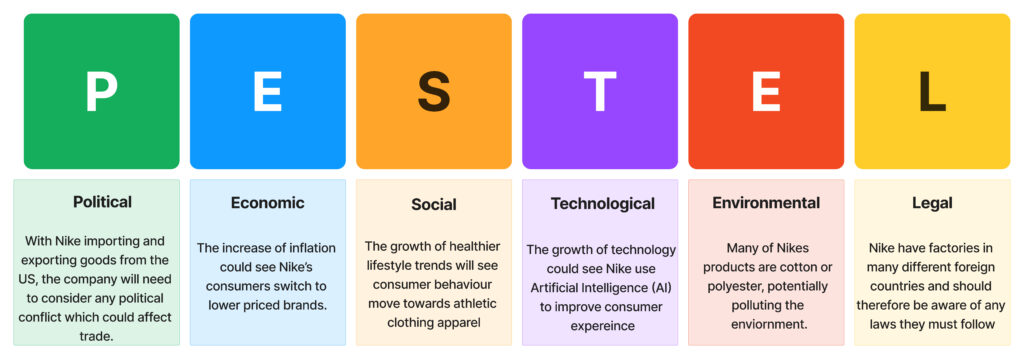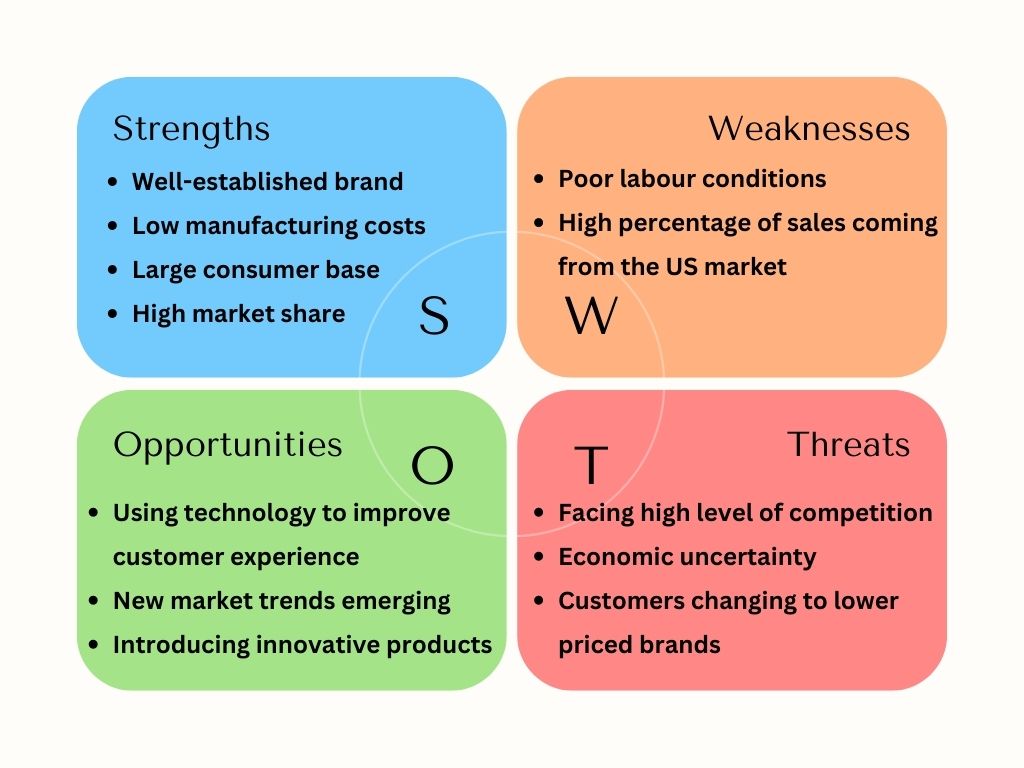What is business strategy?
A business strategy can be considered as the process of putting a plan of action in place to help you achieve a competitive advantage. The plan will consist of goals and objectives you wish to achieve to create long-term value for your business.
Why is business strategy important?
Influential business leaders will know the importance of having a strategy in place for their business. Not only will it provide the businesses with a source of direction and create a vision for their employees to follow but it will improve certain areas of the business. Three reasons to why a business strategy is important have been listed below;
- Achieving a competitive advantage: For many businesses competition they will compete within highly competitive markets and will want to gain the attention of as much customer as possible. Therefore, being aware of your strengths and knowing which ones you can use to your advantage is an important aspect to strategy.
- Improved efficiency: With strategy ensuring you manage your time, people and resources, this will allow you to become more efficient in how you do things. Strategy will also enquire you to create a roadmap which will keep you ahead of schedule and make it easier to meet deadlines.
- Control and direction: Creating a strategy is important to offer both control and direction over your business. It is said in business, those who don’t strategies don’t know where they are going. It is therefore important for business leaders to paint the picture to where they want their business to go and provide the steps to get there.
Strategic Planning Tools: Top 2 Simple Business Strategy Models
PESTEL Analysis Explained
What is a PESTEL Analysis? Definition, Example, Advantages and disadvantages
There are many strategic models which you could use while implementing a strategy for your business. This is dependable on the goals you wish to achieve. However, a vital part of strategy is having understanding and awareness of the external environment and the factors which could impact your business.
There is one tool which allows you to scan and monitor the external environment and see what opportunities and threats may currently exist. This tool is known as a PESTEL Analysis. This strategy tool allows to plan towards the future by looking at each of the key factors explained below;
Political

Political factors are those which are driven by your local government impacting the industry in which your business operates within. Some of the factors to be aware with here are;
- Corporation Tax
- Free trade and the movement of goods
- Corruption
Economic
This factor is built around the economy and how financial aspects can directly impact your profitability. As this factor has major effects on consumer spending, companies will want to be aware of any future threats the economy may oppose. Some of these factors include;
- Inflation
- Interests rates
- Exchange rates
- Employment rates
Social
Social factors or also known as socio-cultural factors are more related to the human aspect of the PESTEL factors and how the evolution of people can shift behaviours and offer new trends. This factor is effective for marketing companies where the prediction of buying trends can play a key role. Some of the other social factors include;
- Demographic changes
- Consumer buying behaviour
- Attitudes and beliefs
- Lifestyle trends
- Growing population
Technological
Technology as a factor plays a massive role for most businesses in today’s business world. With the pace of change with technology increasing, management must be aware of how it may impact their business. Current technology factors are as follows;
- Artificial intelligence (AI)
- Research and development
- Automations
- Cyber Security
Environmental
The environmental factor is becoming more apparent with many businesses today becoming more sustainable and environmentally aware. Many leaders have seen their business grow by taking on practices in corporate social responsibility (CSR). Here are some of the environmental factors:
- Weather
- Climate change
- Carbon footprint
Legal
All businesses will have legal obligations they must follow and abide by. These laws also have the potential to change or new laws could also be introduced. Therefore being aware of the laws and regulations you must follow based on the location of your business is important. Some legal factors are as follows;
- Employment laws
- Industry regulations
- Consumer protection laws
- Health & safety laws
Example of a PESTEL Analysis
PESTEL Analysis of Nike

Advantages and Disadvantages of a PESTEL Analysis
Advantages of PESTEL;
- It is a simple tool to use
- Good way to exploit future opportunities
- Good way to defend against future threats
- Encourages management to take part in external and strategic thinking
Disadvantages of PESTEL;
- The external environment is always changing and the analysis can quickly go out of date
- Data used can often be based of assumptions
- The model can often be over-simplified and used insufficiently
SWOT Analysis Explained
What is a SWOT Analysis? Definition, Example, Advantages and Disadvantages
A SWOT analysis is different from PESTEL as it encourages managers to look internal to the business. The acronym SWOT stands for strengths, weaknesses, opportunities and threats.
It is important for you to understand your strengths as this may be what your customers value. Also, knowing your weaknesses will put you in a better position to create a strategy to minimise these.
Strengths
Areas to consider when looking at your strengths are;
- What do you do well that others don’t
- What do your customers value
- Why do your employees enjoy working for your business
- What is unique about your resources
Weaknesses
Areas to consider when looking at your weaknesses are;
- Are there any areas you need to improve on
- Is there anything which frustrates staff within the business
- Do your customers have anything negative to say about the business
Opportunities
Areas to consider when looking at your opportunities are;
- Are there any trends occurring?
- Which of the external factors offer the most opportunity?
- What strengths can you use to your advantage?
Threats
Areas to consider when looking at your threats are;
- What factors could potentially harm your business
- Are there any weaknesses which could be a threat to the business?
- Is your competition causing a threat to the business?
Example of a SWOT Analysis
SWOT Analysis of Nike

Advantages and disadvantages of a SWOT Analysis
Advantages of a SWOT Analysis
- Allows you to see which strengths could be used to your advantage
- Will allow you to manage resources better
- Offers the potential to distinguish from competitors
- Can encourage collaboration
Disadvantages of a SWOT Analysis
- Management conducting the analysis may be bias towards strengths and weaknesses
- Provides no tool to decide the weighting factors
- Only a small part to business planning, may need to introduce other tools
Summary
Choosing to either conduct a PESTEL or SWOT Analysis will be depended on what you wish to achieve. If you are looking to get an understanding of your own business and look at what is good abut the business or areas that could be improved then a SWOT Analysis is the best tool for this. However, if you are want to look into the future and make key strategic decisions then the PESTEL Analysis will be the best tool for this.
Both tools are simple to use so it would be encouraged to use both alongside each other and make decisions based of each to benefit your companies future. You may be interested in other articles from ProfileTree such as: 9 Online Creative Strategy Ideas for Businesses , Is SWOT a Competitive Analysis? Here’s What You Need to Know, or Best Apps for Social Media Marketing Small Businesses – A Pros & Cons List.


